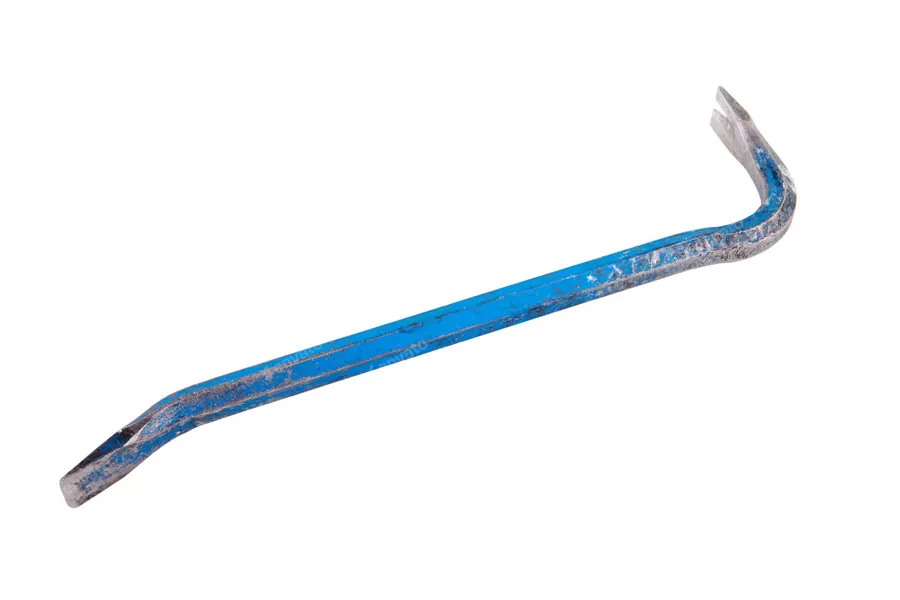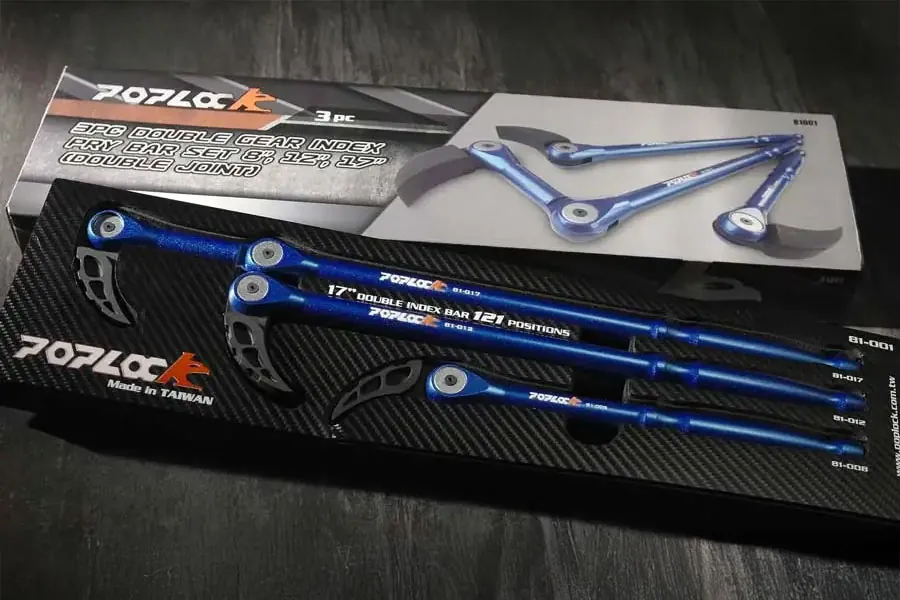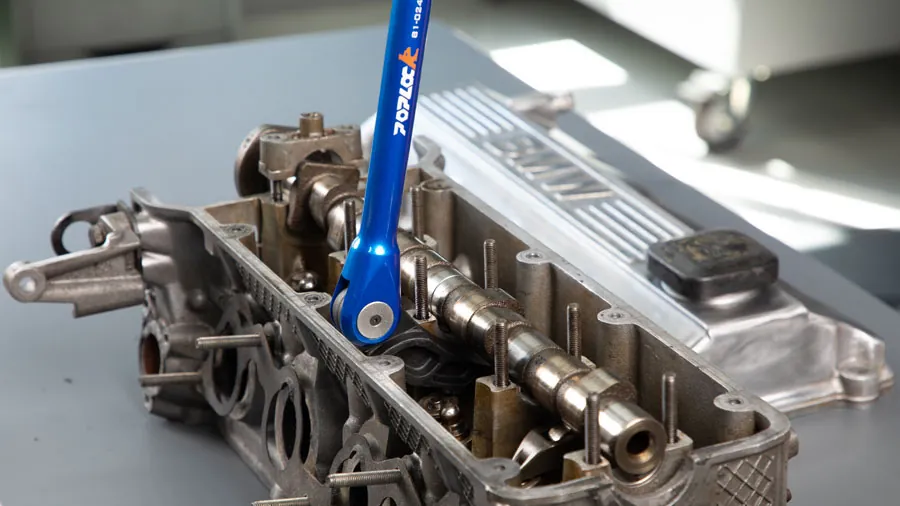Indexable pry bars are becoming increasingly popular because they allow you to use a single pry bar as a nail puller, wrecking bar or crowbar by changing the angle of the indexing head to the shaft. When you put a set of indexable pry bars together into an indexable pry bar set of different sizes, you can get the utility of many fixed head bars in a much more convenient, and cost-effective, package.
How does an indexable pry bar improve crowbar utility?
An indexable pry bar has a swivel to adjust the angle between the end of the bar and the shaft in fixed increments. The indexable pry bar has two main advantages over fixed head pry bars. The swivel head enables you to fit the pry bar into gaps and tight spaces that you can’t get a standard pry bar into, and you can change the angle between the end and the shaft to adjust, and even reverse, the direction of leverage.
Explainer: what is indexing?
Indexing is an engineering term normally used to describe rotational movement to a precise angle or interval of rotation. An indexable machine or tool is one that uses indexing to change orientation, usually to very high degrees of precision, using set position markers and without the need to use measuring devices to ensure accuracy. An indexing pry bar has a swiveling head that can be rotated and locked at specific angular intervals.

Are all types of pry bars indexable?
You can engineer indexing heads into all types of pry bars, nail pullers, crow bars and wrecking bars to make them indexable. If you look at the crowbar in the picture above, it’s obvious that having a fixed head makes it harder to get into tight spaces, making some jobs impossible. Indexing pry bars add versatility and utility to any type of pry bar design. So the question really is why is the indexing pry bar not the universal standard pry bar design?

Why isn’t every pry bar indexable?
It’s easy to see from the picture above that indexable nail pullers, crowbars or pry bars have much more utility than those with a fixed head because you can set the angle to match the job, but indexing pry bars are not the traditional design. The reason for this is not that indexable pry bars are in some way not as good as fixed head pry bars, it’s because it’s difficult to build a high quality, robust, reliable indexing head.
Engineering a high quality indexing head is not easy. The indexing swivel needs to be as strong as the shaft of a pry bar but also easily unlocked, rotated to an exact position and securely locked again. The index must not wear, jam or fail under heavy loads. The problem is not with indexable pry bars, but with poorly designed indexing heads and low quality materials used in manufacturing.

Indexable pry bars require high quality engineering and materials
In the hand tool market, there is a tendency for manufacturers to try to sell products on price and features rather than quality engineering and materials, and this is a problem for customers looking to buy an indexable pry bar. There are a profusion of inexpensive indexable pry bars for sale, which are too flimsy for any real world use, made of low quality materials and with slack, low-precision indexing.
The material technology and engineering expertise exists to make very high quality, robust, indexable pry bars that are just as strong as non-indexing pry bars of any size or type. The problem is that it takes high quality materials and excellent engineering to make it successful. This is why Taiwan is the leader in manufacturing innovative tools of this type, because Taiwan has both excellent materials and global leadership in manufacturing technology.
At Poplock we apply the best Taiwanese design, engineering and materials technologies to developing and manufacturing all our innovative products. All indexable pry bars are not the same, Poplock indexable pry bars are leading the rest in material strength, reliable, durable and precise indexing technology and manufacturing quality. That’s not all, Poplock tools are available globally from the Poplock Amazon store!



